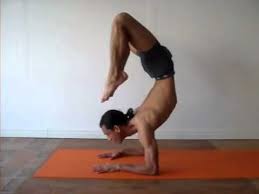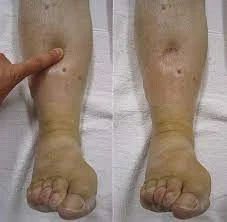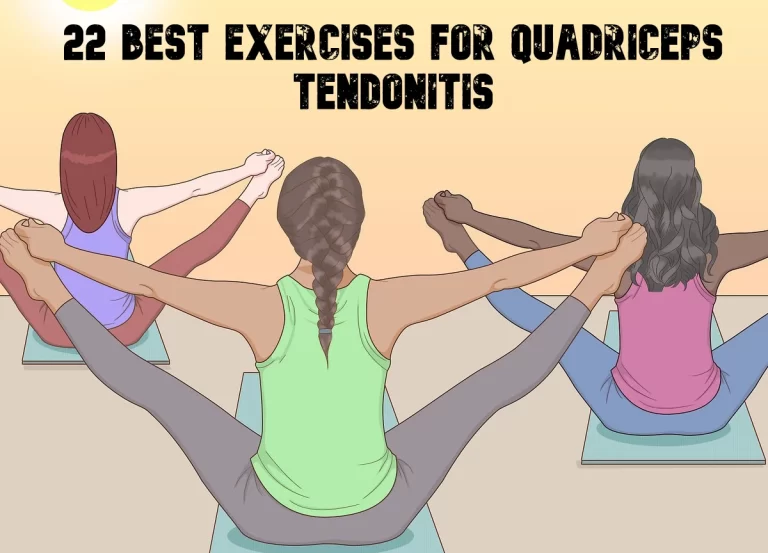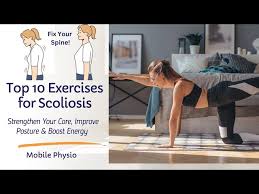Mixed Cerebral Palsy And Physiotherapy Treatment
Table of Contents
Introduction:-
Mixed cerebral palsy occurs when a baby is experiencing symptoms of many types of cerebral palsy at once, a group of neurological impairments that affect motor and overdeveloping functional skills. Because baby diagnosed with mixed cerebral palsy may have brain damage in more than one area of the brain, this form of cerebral palsy type can induce a variety of physical and neurological problems.
What is mixed cerebral palsy?
This type of cerebral palsy happens when a patient exhibits symptoms of more than one form of cerebral palsy. Patients diagnosed with mixed type cerebral palsy have marked damage to the motor and sensory control centers in several parts of the brain.
Symptoms of mixed type cerebral palsy is usually based on the location of movement impairments and the resulting combination of cerebral palsy types. These motor challenges can take place in the legs usually termed diplegia, one-half of the body which is called hemiplegia, or all four limbs known as quadriplegia.
Some cases of head injuries resulting in to mixed cerebral palsy are preventable and also manageable but sometimes it is caused by medical negligence and unawareness.
Causes of Mixed Cerebral Palsy:-
Mixed cerebral palsy is caused by damage to multiple facets of the brain. It can happen because of any multiple injury of damage to the consistently developing motor cortex, basal ganglia, thalamus, and cerebellum.
Children with mixed form of CP subsequently experience the results of two different types of cerebral palsy. However, it’s least possible that the most rare form which includes all three types of effects can also been observed in mixed CP.
CP is the consequence of restitution to the developing brain early, mean while, or shortly after birth. Therefore, common causes of mixed cerebral palsy include:
- Premature birth
- Multiple-birth pregnancy
- Hypoxia while labour (lack of oxygen in the brain)
- Maternal infections during pregnancy
- Infant infections
- Traumatic brain injury either to fetus or mother
- Stroke to mother or fetus
- Genetic factors
Cerebral palsy takes place when the motor cortex, basal ganglia or cerebellum these are parts of the brain that control muscle tone get damaged. Each of these parts can cause different motor impairments according to the damage for example stiffness or spastic movements and are reasonable for different type of cerebral palsy.
Motor Cortex: Injury to the motor cortex causes spastic cerebral palsy. Which means child’s muscle tone is increased(hypertonicity) , making their muscles very stiff to move.
Basal Ganglia: The basal ganglia are associated with dyskinetic cerebral palsy, which is when patient’s muscle tone changes from being too loose to too tight abravately. Another sign of dyskinetic cerebral palsy is that child will also face struggle to control their arms and legs.
Cerebellum: An injury to the cerebellum can cause ataxic form of cerebral palsy, which is when the child with ataxic cerebral palsy struggles with balance, rapid movements and coordination.
Symptoms Of Mixed Cerebral Palsy:-
There are three main types of cerebral palsy: Spastic, Dyskinetic, and Ataxic. Most individuals with mixed cerebral palsy are observed expressing characteristics associated with at least 2 types. The most prevalent and common combination is spastic-dyskinetic.
Spastic Cerebral Palsy
Spastic cerebral palsy is the most customary type of cerebral palsy, prevelenced up about 80% of all cases. It’s caused due to injury to the motor cortex which is the part of the brain works for controlling and planning voluntary movements. Depending on the severity and area of the damage to the motor cortex, spastic cerebral palsy can affect one extremity, one side of the body, primarily the legs, or the whole body involving all four limbs and potentially including the face.
This type is characterized by spasticity, which refers to higher muscle tone caused by deranged signals from the damaged cortex. Spasticity typically results in stiff or exaggerated reflexes and movements. However, if the condition is not properly managed, it can lead to negative long-term disruption and impairments for example pain, poor posture, contractures, bedsores and non-ambulation(inability to walk).
Dyskinetic Cerebral Palsy
This cerebral palsy occurs in up to 15% of all cerebral palsy cases, thus it is the second most diagnosed form of cerebral palsy. It occur due to impairment in the basal and thalamus and it is usually characterized by uncontrollable rapid movements.
There are two main types of distorted movement patterns patients with dyskinetic cerebral palsy may experience: athetosis and dystonia.
Athetosis refers to uncontrollable fluctuations in muscle tone and length. The muscles fluctuate between being flaccid and spastic, which leads in the appearance of continuous fast movement. In contrast, dystonia describes muscle contractions which induce repetitive, twisting movements.
Ataxic Cerebral Palsy
This type of cerebral palsy is the least common type of cerebral palsy. It is a consequence of damage to the cerebellum, which is responsible for maintaining balance, co-ordination, and fine motor skills. Children with this type of CP usually walks with wide-based stance or struggle with tasks that require precision and understanding.
In the following section, we’ll discuss how individuals with mixed CP can manage their motor impairments.
Mixed cerebral palsy can bring a variety of symptoms depending on which part of the body it affected. Diplegic cerebral palsy affects either both lower limbs or both upper arms. Hemiplegic cerebral palsy includes one side of the body, and quadriplegic cerebral palsy involves all four limbs.
Mixed cerebral palsy combines two or more movement issues, which including:
- Hyper-kinetic – excessive voluntary and involuntary movements
- Hypo-kinetic – decreased and slow purposeful movements
- Dyskinetic – inability to control body movements
- Dystonia – involuntary movement and a continuously abnormal posture
- Spastic – increased muscle tension, stiffness, rigidity, awkward and abnormal movements
- Non-spastic dystonic – involuntary movements, decreased or fluctuating muscle tone
Some of these symptoms does not appear until months after the child is born, that is why doctors cannot conclude diagnosis of the child with cerebral palsy until they are 6 months or older unless the symptoms are very severe. Children are normally diagnosed between the ages of 1 to 3. For the first year of your child’s life, guardians and doctors must monitor child’s activities for ruling out symptoms.
Parents should give close attention if their child experiences any delays in reaching the developmental milestones. For instance, children with cerebral palsy often cannot hold their head up with 2 months, roll over unassisted by 4 months and start crawling by 10 months.
Other early signs that might be noticed are:-
The preference for using one hand over the other (he or she will reach out with one but keep the other one balled or engaged into a fist)
A continuation of appearance of neonatal reflexes which usually disappear after certain duration (like the startle reflex)
A delay in the appearance of protective reflexes, such as sneezing or taking hands off of hot objects
A delayed start of postural reflexes, such as stretching out their arms to prevent themselves from falling over parachute reflex
Asymmetrical movements while using one leg more when crawling.
Hyperreflexia, a condition where your child’s reflexes are oversensitive, exaggerated and causes twitchiness, shaking or spasticity for instance trembling hands.
Excessive drooling (salivation) and difficulty feeding and swallowing, prominent gag reflex
Other symptoms that may become apparent later on include difficulty falling and staying asleep, stomach acid leaking into the esophagus and causing indigestion, hips that dislocates anteriorly or infiriorly more easily, difficulty speaking and communicating with others, learning abilities, hearing loss and impaired vision like uncontrollable eye movements or reduced vision.
Management of Mixed Cerebral Palsy:-
As every case of mixed cerebral palsy is different, usual management interventions will vary from patient vise. Through working with a group of medical professionals and rehabilitation specialists, individuals can identify their specific strengths and weaknesses and know how to optimize patient’s strengths and manage their difficulties appropriately.
Mostly utilized management interventions for mixed cerebral palsy include:
Physiotherapy helps individuals improve their motor functions and achieve ADLs through targeted treatment protocols. Physical therapists mostly focuses on stretching tight muscles to elevate range of motion and strengthen the underused muscles to improvise motor control.
Medication:-
Most of the medications given to athetoid cerebral palsy patients are used to treat secondary conditions that are a consequence of developmental brain damage. For example, anticonvulsants are prescribed to reduce seizures and over-the-counter acid reflux medications, such as Zantac, are prescribed for children with weak mastication muscles and gastroesophageal muscles.
Ritalin and other medications such as diazepam and nicotinamide treat attention deficit hyperactivity disorder (ADHD), which is observed in up to 20 percent of children with CP. Medications to control drooling and incontinence are also useful for patients with athetoid cerebral palsy.
Physiotherapy Management:-
Because with all types of cerebral palsy, mixed cerebral palsy is not curable perfectly. Where as damage to the cerebrum is irreversible, the central nervous system is able to utilize neuroplasticity to make significant adaptable changes. Neuroplasticity is known as the brain’s super power to repair by its own. It allows for functions affected by brain damage to be reorganized to unaffected regions of the brain and improved.
Therefore, even though cerebral palsy effects on movements of the body, the key to improvement lies itself within the brain. One of the most effective ways to promote neuroplasticity is through highly repetitive practice of targeted muscle exercises and activities. Consistently practicing targeted exercises or functional activities re-brings demand for those functions in the brain.
This stimulates adaptive changes and strengthens the muscles. The more patient practices, the stronger all newly reorganized functions become.
Mixed cerebral palsy rehabilitation program:-
Physiotherapy helps patients with neurological conditions like cerebral palsy improve their mobility by motivating patient to perform higher repetitions of exercises that target the upper arm, forearms, core, and thighs and legs. It’s interactive, tracks patient’s progress, and adapts to child’s specific ability level to ensure patient is challenged in the perfect amount.
Regaining Mobility & Independence with Mixed CP
Mixed cerebral palsy describes an patient who experiences conditions associated with 2 or more types of CP. By targeting each and every motor impairment separately with the appropriate interventions, individuals with mixed CP may effectively manage their challenges and improve their quality of life.
Static Weight-bearing Exercises
Stimulation of anti gravity muscle strength is imperative, prevention of hip dislocation, reducing spasticity, breaking synergy pattern and improvements in bone mineral density, self-confidence and motor function all can be achieved with the use of Static Weight Bearing exercises such as Tilt-Table,parallel bar, prone on hand exercises and supportive standing frame.
Muscle Strengthening Exercises
It aims to increase the power of weak antagonist muscles and the corresponding spastic agonists which does not allow free movement and to provide the functional benefits of strengthening in children with CP.
Functional Exercises
Training related to specific functional activities including aerobic and anaerobic capacity and core strength training in mobile children, has been shown to significantly improvise overall physical fitness, the intensity of activities, and quality of life. Training programs include static bicycles or treadmill to be beneficial for gait training and gross motor development also helps to reduce spasticity or abnormal movement patterns.
Body Weight Supported Treadmill Training
Child initiates walking from Stepping Reflex Reactions which are normally present in newborns and infants, before the child initiates to take weight on foot, stands and walks. Body Weight Supported Treadmill Training, is achieved through supporting the child in a harness or sling on the treadmill in an upright posture limiting overall weight putting, on a slow motioned treadmill, eliciting the stepping movements.
Therefore Treadmill training lets the development of walking movements is imperative for ambulation. Studies using 3-4 sessions per week lasting for 3-4 years have shown significant effects in 2-3 weeks in lower limb movements and gait type in children with mixed cerebral palsy.
Electrical Stimulation
The aim of the electrical stimulation is to educate initiation of movement ,increase muscle strength and motor function. Electrical stimulation is provided by Trans cutaneous Electrical Nerve Stimulation(TENS)and Neuromuscular Electrical Stimulation (NMES) involves application of trans cutaneous electrical current that results in muscular voluntary contraction. NMES has been postulated to increase muscle strength through elevating the cross-sectional area of the muscle and by marked increased recruitment of type 2 muscle fibers.
Functional Electrical Stimulation (FES) refers to the application of electrical stimulation during a given task or movement when a specific muscle is expected to be contracting. Neuromuscular and threshold electrical stimulation as a modality in Cerebral Palsy is used for increasing strength of the quadriceps muscles in ambulatory quadriplegic children with Mixed Cerebral Palsy, who have difficulty with particular resistive strength training.
Sensory Integration Training
Sensory integration therapy is based on the theory that says some kids experience “sensory overload” and are oversensitive to certain types of physical stimulation. When children have sensory overload, their brains have problem in processing or filtering many sensations at the moment. Meanwhile, other children are under sensitive to special kinds of stimulation.
Children who are under sensitive do not process sensory messages fast or efficiently. These children appears disconnected from the environment they are in. In other case, children with sensory integration issues struggle to organize, understand, and respond to the information they take in from their surroundings. Sensory integration therapy exposes children to sensory stimulation in a structured, repetitive manner.
The theory behind this treatment approach is that, over time, the brain usually adapts and allow them to process and react to sensations more accordingly and efficiently. In this concept, difficulties in planning organizing behavior are attributed to problems of processing sensory inputs within the Central Nervous System, including vestibular, proprioceptive, tactile, visual, and auditory sensations. Children with sensory integration dysfunction frequently use different sensory combination strategies. Treatment focuses on integration of neurological processing by facilitating the individual to process the type, quality, and intensity of sensation.
Task-oriented approach
This treatment is based on the requirements of the child. These days the child is given the possibility to be more of an active challenge faces (instead of, as previously, a passive recipient of treatment) in the context of the day- to-day environment. The aim of this therapy for children with mixed CP, as for most children with deformities , is to facilitate the child’s participation in everyday life situations, e.g., to communicate with parents, siblings, and peers; to move from one place to another; to dress and undress; to eat; and to play.
The choice of goals for therapy is dependent on many factors: the child’s preferences and the family’s choices, the society and environment in which the family lives, and the child’s level of disability. Therefore, it is imperative to integrate principles of motor learning in the management concept and adapt the principles to the prerequisites of each special child. The set aims should be particular, measurable, attainable, relevant, target oriented and timed.
Conductive Exercise
Conductive education (CE) is a combination of educational and target-oriented approach for children with Mixed CP. Specially trained ‘conductors’ give education to homogeneous groups ( group of cp children practicing same exercise) of children with motor disorders. This treatment approach has its origins in learning theory. The conductor who is trained in all aspects of motor and cognitive development forms the activities, particularly the self-care activities.. The emphasis of intervention is on independence in achieving goals rather than on quality of movement.
Occupational therapy:-
Occupational therapy helps individuals improve their independence by practicing new ways to perform daily activities. It may also involve learning how to use adaptive devices. Speech therapy helps individuals with oral motor impairments improve their ability to chew, swallow, and speak.
A speech-language pathologist can also teach individuals with more severe forms of oral motor impairments how to utilize augmentative and alternative communication and speech methods.
Orthotic devices like braces, casts, and splints provide support to musculoskeletal . Individuals with mixed cerebral palsy may experience a combination of both high and low muscle tone, which can significantly affect posture and cause disproportionate growth.
Feeding tubes may ensure that individuals with oral motor impairments meet their nutritional needs.
Baclofen is a muscle relaxant that may decrease spasticity. It may be taken orally in the form of a pill or directly delivered to the central nervous system through an implanted pump.
Botox is a nerve blocker that blocks signals that stimulate muscle contractions. Its effects typically last 3-6 months. Because it is injected directly into spastic muscles, it’s generally more ideal for localized spasticity than generalized spasticity. Orthopedic surgeries typically involve manual lengthening of shortened muscles and tendons.






